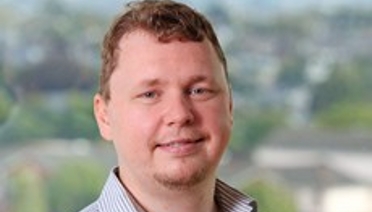Dr Andrey Temko is a research fellow at Infant, the Irish Centre for Fetal and Neonatal Translational Research based at Cork Universaity Maternity Hospital. In this interview he talks about his career to date.
Your initial work looked at speech and audio processing, can you tell us about your work in this area?
I completed PhD in speech and audio processing, developing smart room context-awareness systems using acoustic agents. The human activity that takes place in meeting rooms or classrooms is reflected in a rich variety of acoustic events, either produced by the human body or by objects handled by humans, so the determination of both the identity of sounds and their position in time may help to detect and describe that human activity.
Detection of non-speech acoustic events was quite a new area and its acceptance by the research community that was primarily driven by speech recognition was not smooth. Non-speech sounds were basically considered noise of no interest. We managed to organise a couple of interesting open competition challenges back in 2006-2007.
I believe that some good fundamentals were established at that time. Since then this challenging area attracted a lot of attention from big players like Google and Microsoft. Nowadays big databases of acoustic events exist, there are even some projects on the detection of gunshots in the streets from surveillance camera audio.
Why the move from telecommunications to biomedical engineering?
After finishing PhD I applied for several positions where I thought my signal processing and AI skills could be of use. The Neonatal Brain Research Group that later served as a platform for the creation of the Infant centre, was more persistent, more attractive but mostly quicker than others.
I decided to switch from sounds to neonatal brain waves in 2008. Though it was an eye-catching research from the beginning, it was still difficult to fully appreciate the real translational aspects of what we develop.
Your current research looks at seizure detection and it brings together a number of technologies. Can you tell us what you’re using and how the parts fit together?
Detection of seizures in newborns is a very challenging problem that doctors face in intensive care every day. The accurate diagnosis requires an expert with years of experience of interpretation of brainwaves. This expertise is limited to specialised units, and even there it is not available around the clock seven days a week. As a result, many seizures go unnoticed and untreated which would cause an adverse neurological outcome.
In around 2011, together with my colleagues I developed a smart AI solution that can continuously monitor a baby’s brainwaves and provide doctors with an objective decision support. This tool (ANSER) has recently undergone European multi-centre clinical trial towards its regulatory approval and clinical adoption. The algorithm is a computer software that extracts multiple informative characteristics from neonatal brainwaves (EEG) and assigns a level of abnormality to the ongoing brain activity. If a particular segment of EEG is abnormal it will raise an alarm and clinical personnel can have a closer look into the case.
At the moment, I am working on the development of a newborn smart brain ‘stethoscope’. To monitor brain activity you need some expensive EEG equipment. Our brain stethoscope is a portable device that allows a doctor to listen to a baby’s brainwaves in a similar way a conventional stethoscope is used to assess heart and respiration. Such a low-cost device for sound-based screening of brain health could be used by all healthcare professionals, greatly improving access to diagnosis and treatment for remote hospitals and disadvantaged communities.
You previously picked up awards for winning international competitions and for research commercialisation. How important is it for researchers to have an appreciation of the value of their work?
Research is similar to any other professional activity. Our main product is a publication which is a message we would like to share with the research community. The more important the message is the wider the audience is, the higher the rank of the venue which is targeted.
There are of course other types of products such as patents, inventions, presentations, posters, talks, but the main product of our ‘industry’ is still a publication. It is always pleasant when you product is valued and its quality is recognised by peers. In academic world this is done via citations.
The business value of research is not perceived by the researchers directly. While an extra effort is required from a researcher to pursue the commercialisation route, there is no evident ‘carrot’ for doing so. Besides, a commercially successful product does not have to have grounds in excellent research.
While there is a move towards a generalisation of skills, a good researcher is rarely a good entrepreneur and vice versa. I am lucky to be part of the Infant centre where the translational value (as opposed to business value) of research is recognised.








Subscribers 0
Fans 0
Followers 0
Followers